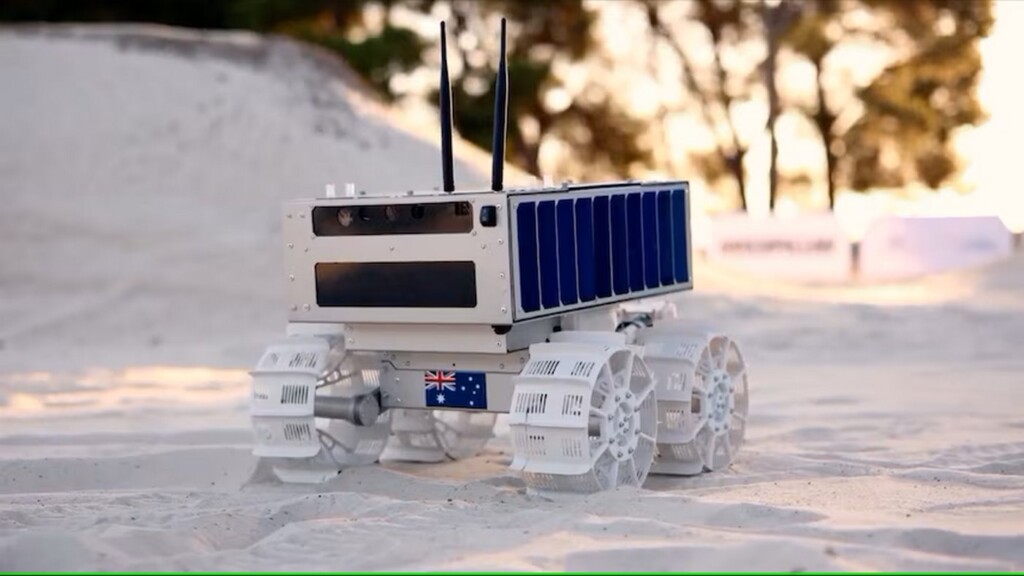 Australia’s first lunar rover, the ‘Roo-ver’ – credit: Australian Space Agency, supplied
Australia’s first lunar rover, the ‘Roo-ver’ – credit: Australian Space Agency, suppliedMeet the little buggie that’s going to take the nation Down Under, up and over.
This is the ‘Roo-ver’, Australia’s first major contribution to robotic space exploration as the first Lunar rover ever launched by the prosperous country.
 Australia’s first lunar rover, the ‘Roo-ver’ – credit Australian Space Agency, supplied
Australia’s first lunar rover, the ‘Roo-ver’ – credit Australian Space Agency, suppliedA consortium of 21 different private firms, universities, and small startups has been contracted by the Australian government to design, test, and build Roo-ver, while 8,000 submissions were received regarding the future robot’s name.
It pays homage to the country’s iconic animal as the country of settlers, criminals, and prospectors now lends its pickaxe to establishing a permanent human presence on the Moon.
The Australian Government has invested AUD$42 million into the mission and NASA has agreed to take the robot to the Moon.
Roo-ver’s primary mission objective will be to collect samples of the ashy mixture of dust and rock, known as regolith, that makes up the Lunar soil. The intention is to analyze the regolith for signs of water or oxygen, the necessities of life.
Through the Artemis Accords, and the parallel vision offered by the International Lunar Research Station project (ILRS), nearly all space-capable and space-faring nations have signaled their intention to create a semi-permanent human presence on the Moon, but that will require in-situ material harvesting of at least water if not air.
JAPAN GOT TO THE MOON: Spacefaring Japan May Become the 5th Country to Land on the Moon This Month
Warwick Penrose, a member of the ELO2 consortium that aims to build the Roo-ver, didn’t mince words about the intentions of Australians in this endeavor, nor of the realities of future objectives for the consortium and humanity at large.
“If we’re going to get to Mars and put humans on Mars, we need to build a Moon base,” he said. “We have to try and establish life on the Moon. The only way we’re going to get to Mars is build a rocket that gets from the Moon to Mars.”
Launching a rocket from Earth requires a substantial portion of the ship’s fuel to be used to exit the atmosphere, launching from the Moon would remove this requirement which affects weight, size, shape, and supply calculations.
INDIA GOT TO THE MOON: India Becomes Fourth Nation to Touch Down on the Moon In Mission to Study its South Pole
Roo-ver will hopefully be taking his big leap into the final frontier later this decade.
“This really deepens Australia’s ability to showcase what we lead the world in, and that is remote operations,” Australian Space Industry head Enrico Palermo told ABC News AU.
SHARE This Cute Little Joey With A Huge Mission…
Source link

